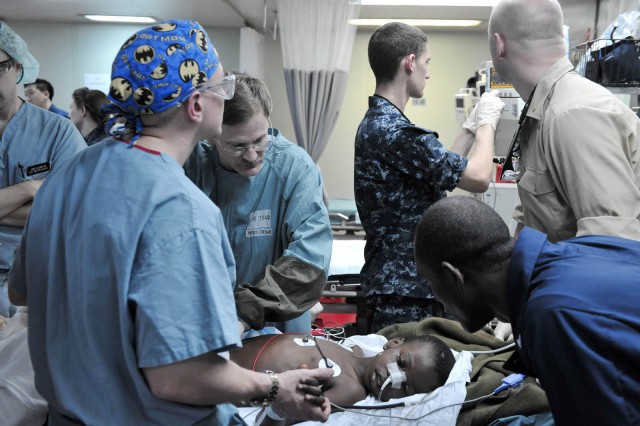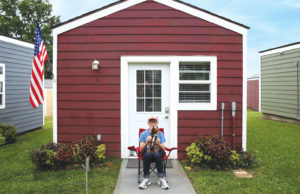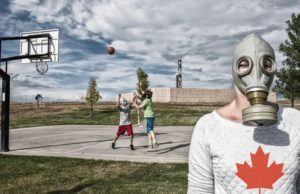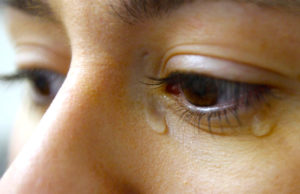
A powerful aftershock that rocked
Wednesday morning has sped efforts to bring more aid to outlying
provinces, as authorities scrambled to assess additional damage and
terrified people filled the streets for fear of unstable buildings
eight days after the nation was devastated by a previous, stronger
quake.
A
arrived in Petit-Goave by helicopter Wednesday said there appeared to
be little new damage from Wednesday’s temblor. The 7.0-magnitude quake
that struck
“There are also reports of people injured,” said
Morton, whose U.N. team included Polish medical personnel, engineers
and a search-and-rescue team.
“There could be people trapped,” Morton said, “but
the initial impression is that the additional damage is not hugely
significant compared to the initial quake.”
But the team could not conduct further assessments
or reconnaissance missions for newly trapped survivors because there
was no fuel at the town police station.
A lack of supplies has hampered attempts to rescue survivors from felled buildings and to clear roads.
“We would like to go rescue people but the heavy
machinery ran out of fuel,” Douge said. “Even if we find someone, how
are we going to move all this scrap?”
Still, U.N. responders said they were impressed with the way Petit-Goave mobilized after last week’s quake.
The city’s emergency response plan kicked in, with
crews recovering and removing the dead, and the local scouts organized
to perform “useful tasks,” said
“This community is very organized and quite resilient,” he said. “The big issue is that people are running out of money.”
In Leogane, also west of the capital, Haitian
officials estimate that nearly 90 percent of buildings collapsed in
last week’s quake — among the worst in the country.
Aid has been slow to reach Leogane, a city of
134,000, in part because the roads leading in are ruined. A giant crack
splits the main highway into town in two, leaving a ditch with depths
of up to 30 feet.
Small international medical teams began arriving in
Leogane Sunday, and were quickly overwhelmed by the number of severely
injured.
minister of communications and culture, said government ministers have
been dispatched to hard-hit communities in outlying provinces to help
local leaders prioritize needs.
Haitian officials have supplied between 150 and 300
gallons of fuel for each city’s mayoral office, Lassegue said, and
government ministers will help ensure that thousands of people bused
out of the capital make it to their homes in the provinces.
Meeting with international donors Wednesday,
Lassegue and other Haitian government officials called for more tents,
trucks and help putting Haitians back to work.
An industrial park near the capital’s airport
employed about 20,000 people, mostly garment workers, but the factories
are now idle, many damaged from the earthquake.
“The government needs the (industrial park) to resume its activity,” Lassegue said.
The U.N. Development Program announced Wednesday
that it has employed nearly 400 Haitians and paid them in cash to help
deliver humanitarian supplies.
By the end of the week, the U.N. program plans to hire another 700 people to remove rubble and repair streets.
A stark reminder of the need for employment appears
every day near the airport, where hundreds of men line both shoulders
of the road waiting for work.
But many are still overwhelmed with the immediate
aftermath of last week’s earthquake, which killed an estimated 200,000
people, left 250,000 injured and made 1.5 million homeless, according
to Haitian government officials.
Wednesday’s aftershock seemed to set emotions back
as the temblor was felt strongly in the capital, where buildings swayed
and dropped chunks of concrete. Frightened survivors wailed in terror.
The shaking briefly sowed panic at a wharf near the
“We have nowhere else to go,” said
Lassegue said Wednesday that 121 people have been rescued.
At a small clothing store downtown, the aftershock
exposed a trove of packaged clothes, triggering a frenzied wave of
looters. Haitian police chased them off at least three times.
“It’s not their fault. They have to steal it,” said
Prime Minister
“We have two or three vagabonds in the streets who
are creating problems,” he said. “But it is not fair to say people are
violent.”
Looting appeared limited to the downtown commercial center in
Bellerive said Canadian troops had opened an
airstrip in Jacmel, on the country’s southern coast, to begin
delivering aid to more areas.
In
humanitarian agencies continued to struggle to meet the overwhelming
need for water, food, medical care, fuel and other supplies.
Lassegue, the communications minister, said 36 water distribution points were now set up throughout the capital.
Bellerive said agencies were evaluating how much
food and water to deliver to the more than 300 homeless encampments
that have formed in
One camp, on a golf course near the U.S. ambassador’s home in the
Petionville neighborhood, has more than 15,000 people living in tents.
He said the Haitian government wanted to avoid
sending too few provisions to the encampments for fear of sparking
unrest from people fighting for food and water. “If we do a
distribution that is bad,” he said, “the aid could stop.”
Advance teams from the
were on the ground Wednesday, meeting with Haitian health ministry
officials and visiting hospitals and neighborhoods to assess potential
public health threats.
Typhoid and rabies could pose significant risks, said
“Everyone is focused on acute care, but the next
phase will be public health,” he said. “We’re worried about typhoid. We
know some conditions may in fact turn infectious.”
The USNS Comfort arrived in
Kirby said
At downtown’s
He called the scene “utter devastation.”
“I’ve been to
—
(c) 2010, The Miami Herald.
Visit
Distributed by McClatchy-Tribune Information Services.













